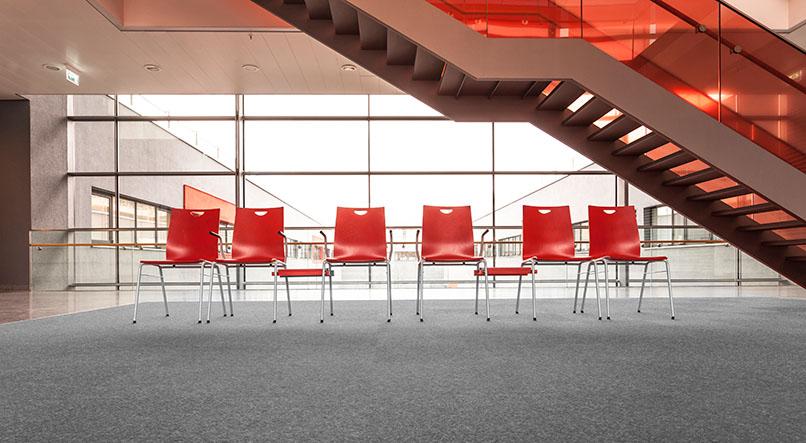
Four Steps to Clean More with Less

Flattening operating budgets caused, in part, by an 800,000-student decline in college enrollments since 2011 are pressuring facility maintenance directors to get more productivity from their cleaning crews, a recent study by a top education consulting firm shows. Keeping facilities clean and comfortable for students calls for smart decisions and savvy equipment choices to cover more square footage at less cost.
The 2015 study by Sightlines, a consulting firm that serves higher education facilities managers, found that expenditures for college and university facilities operations, including maintenance and custodial services, increased only seven cents to $4.55 per gross square foot (GSF) from 2012 to 2014. The study also found significant increases in custodial staff coverage rates. Since 2009, the average maintenance worker covers an additional 6,000 GSF of building space, attributable to the addition of more buildings on campuses, staffing reductions or both.
"Cleaning larger and larger spaces is the new reality for higher education facilities managers," notes Dalvin Green, product manager for Sanitaire. "Our challenge as manufacturers is to provide clients with equipment that allows crews to clean more square feet per hour and work comfortably."
Green offers four factors facilities managers should consider to meet the challenges of cleaning more space with scarce resources.
1. Machine life: Determine your machinery's cost of ownership. Product warranties offer some guidance. Examine the warranty period and determine the number of hours the machine will be used during that span. Also look for machines that are easy to maintain. Every minute it takes to change vacuum bags, brush rolls and filters is a minute the machine is out of service. Look for equipment with easy access compartments to replace disposables or remove clogs. Also consider products that assemble quickly and without the use of tools. And, train your employees on how to easily service the machine – just like a car, commercial equipment requires regular maintenance for best performance.
2. Worker comfort: The weight and maneuverability of equipment plays a key role in minimizing stress and maximizing the productivity of cleaning crews. Ergonomic design that shifts weight from the handle to the base of the machine helps crews operate productively and with less musculoskeletal stress.
3. CRI Certification: Look for equipment that has earned the Carpet and Rug Institute Seal of Approval that rates machines for dirt removal capabilities, dust containment and their impact on carpet appearance and wear. The CRI Gold Seal is the highest rating awarded to a commercial vacuum.
4. Machine capacity: Consider machines that are built to cover more area more quickly, such as wide-area vacuums that can clean up to a 28-inch path, or backpack vacuums that can speed area cleaning or above-the-floor cleaning.
For more tips and information, visit SanitaireCommercial.com.

Leave a comment